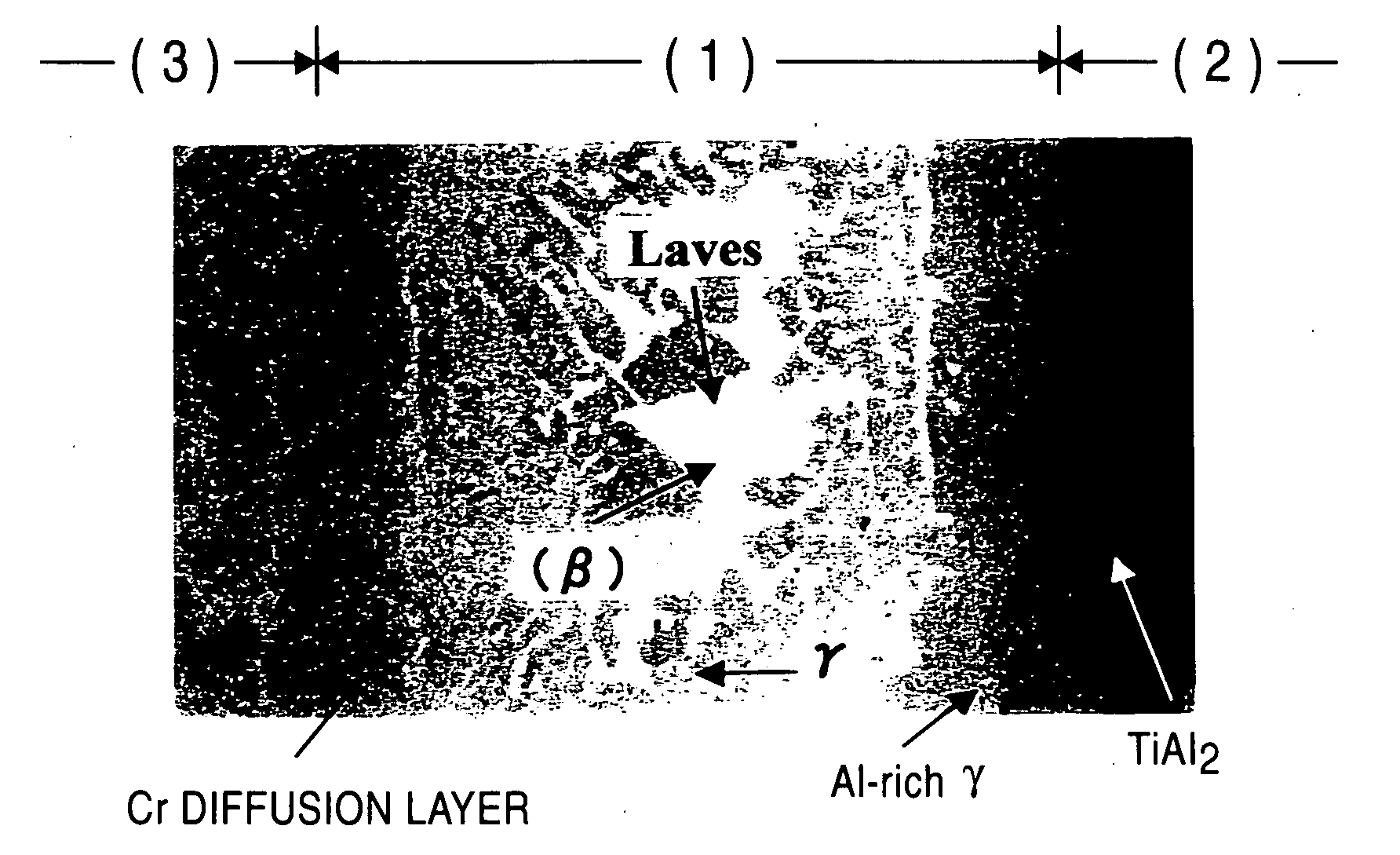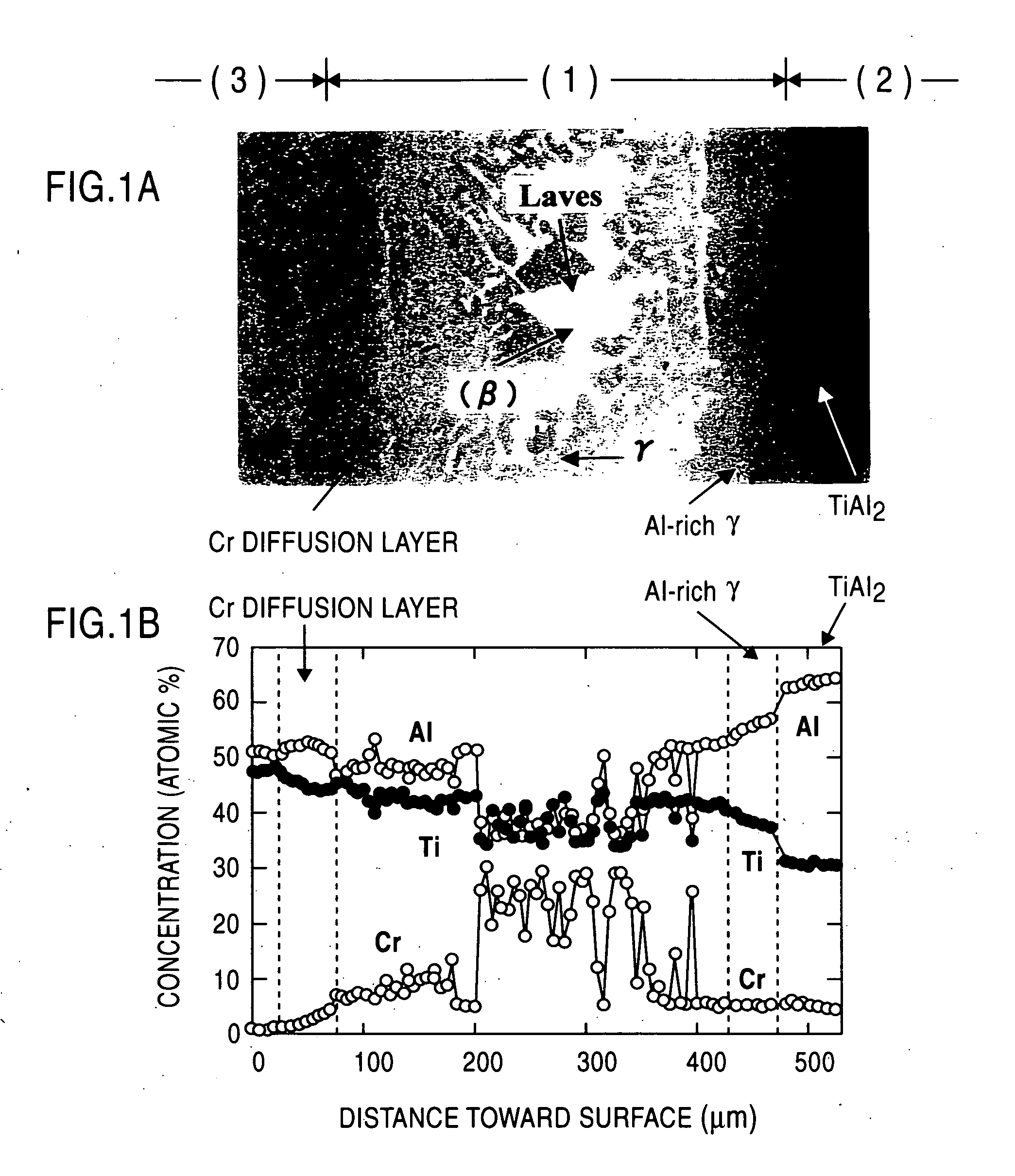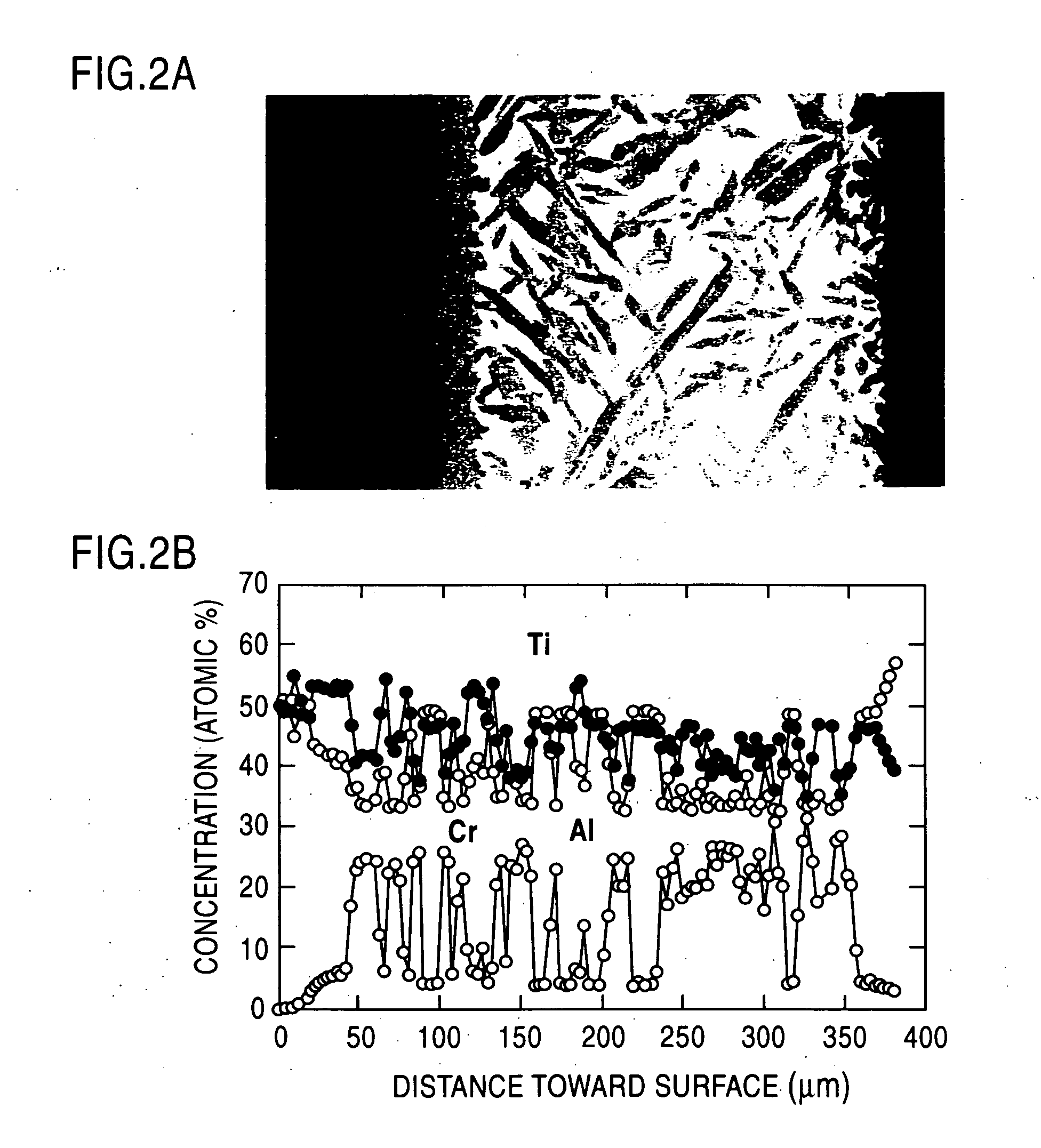Heat-resistant ti alloy material excellent in resistance to corrosion at high temperature and to oxidation
a technology of high temperature corrosion and oxidation resistance, which is applied in the direction of metallic material coating process, solid-state diffusion coating, chemical vapor deposition coating, etc., can solve the problems of difficulty in working, inability to supply al, corrosion and/or oxidation developing from defective portions, etc., to achieve excellent high-temperature characteristics, improve mechanical properties, and suppress the occurrence of high-temperature corrosion
- Summary
- Abstract
- Description
- Claims
- Application Information
AI Technical Summary
Benefits of technology
Problems solved by technology
Method used
Image
Examples
example
Example 1
[0056] An Al alloy containing 50 atomic % of Ti was used as a substrate. The substrate was immersed in a mixed powder of Cr and Al2O3, and heated at about 1300° C. under a vacuum atmosphere for 5 hours to diffuse Cr at a rate of about 250 g / m2. The diffused Cr exhibited a β phase. Then, the substrate was cooled in a furnace (average cooling rate: about 10 to 20° C. / min) to separate three phases of β, γ and Laves phases from the β phase of Cr so as to form a three-phase layer (inner layer 1) having a thickness of about 300 μm. The heat-resistant Ti alloy substrate formed with the three-phase layer was then immersed in a mixed powder of TiAl3 and Al2O3, and heated at about 1300° C. under a vacuum atmosphere for about 10 hours to diffuse Al at a rate of about 400 g / m2. Consequently, an outer layer 2 having an average thickness of about 100 μm was formed on the inner layer 1.
[0057] In the sectional observation of a surface region of the obtained Ti—Al alloy material using an ...
PUM
| Property | Measurement | Unit |
|---|---|---|
| temperature | aaaaa | aaaaa |
| temperature | aaaaa | aaaaa |
| temperature | aaaaa | aaaaa |
Abstract
Description
Claims
Application Information
 Login to View More
Login to View More - R&D
- Intellectual Property
- Life Sciences
- Materials
- Tech Scout
- Unparalleled Data Quality
- Higher Quality Content
- 60% Fewer Hallucinations
Browse by: Latest US Patents, China's latest patents, Technical Efficacy Thesaurus, Application Domain, Technology Topic, Popular Technical Reports.
© 2025 PatSnap. All rights reserved.Legal|Privacy policy|Modern Slavery Act Transparency Statement|Sitemap|About US| Contact US: help@patsnap.com



